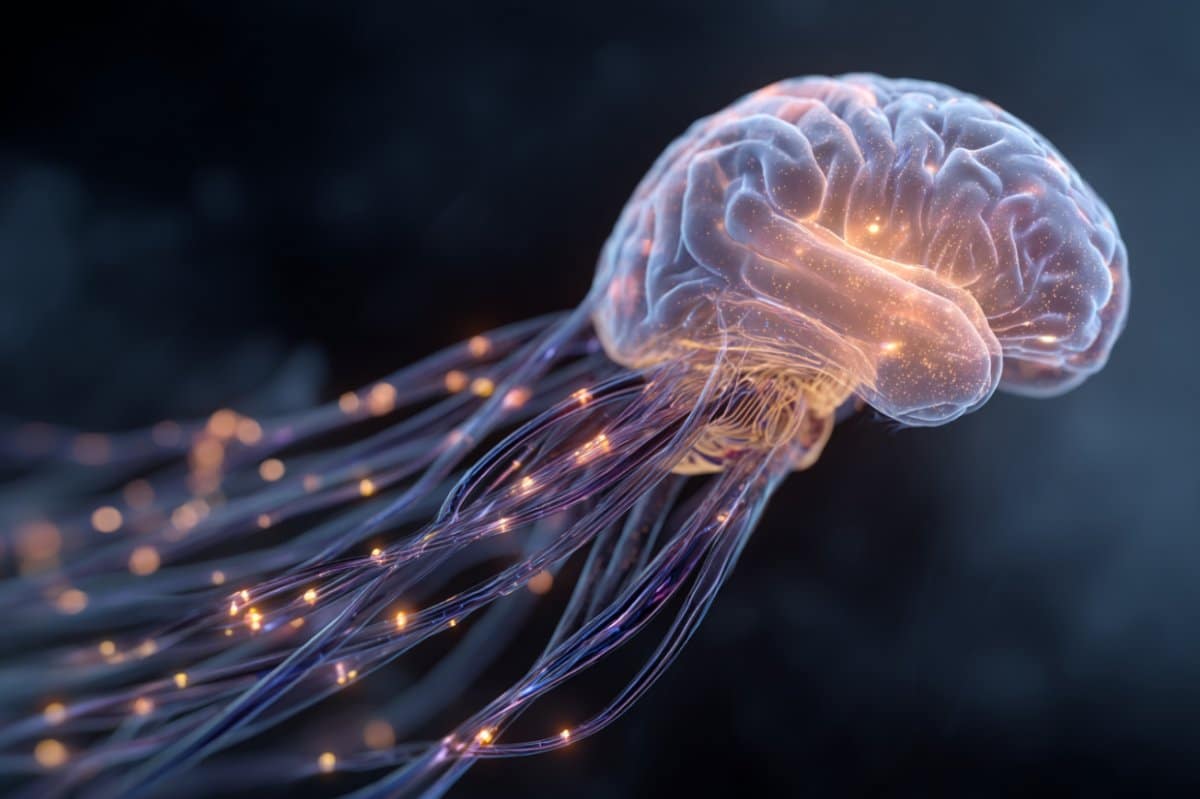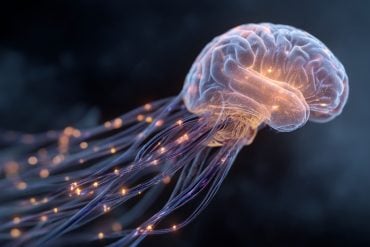Summary: Researchers have traced the earliest stages of multiple sclerosis (MS), showing that the immune system begins attacking the brain up to seven years before diagnosis. By analyzing over 5,000 blood proteins, they identified molecular signs of damage to myelin—the protective sheath around nerve fibers—long before symptoms emerge.
Key biomarkers such as IL-3 and MOG reveal a two-stage attack, first targeting myelin and later damaging the nerve fibers themselves. This discovery paves the way for an early diagnostic blood test and, potentially, preventive MS treatments.
Key Facts:
- Early Detection: Damage to myelin appears up to seven years before MS diagnosis, revealed by a spike in the MOG protein.
- Immune Activation Marker: IL-3 plays a central role in recruiting immune cells that trigger early brain inflammation.
- New Diagnostic Tool: Researchers identified 21 proteins that could form the basis for a predictive blood test for MS.
Source: UCSF
By the time patients start seeking care for multiple sclerosis (MS), the disease has already been damaging their brains for years. But until recently, scientists didn’t understand which brain cells were being targeted or when the injury began.
Now, by analyzing thousands of proteins found in the blood, scientists at UC San Francisco have created the clearest picture yet of when the disease attacks the myelin sheath that covers the nerve fibers. It shows that the immune system begins attacking the brain even earlier than previously had been thought.

The study measured debris from these attacks in a person’s blood, along with the signals that coordinate the immune system to go on the attack. It lays out, for the first time, the sequence of events that eventually lead to the disease.
The discovery could lead to new ways to diagnose multiple sclerosis — and possibly one day prevent it.
MS first attacks the fatty myelin sheath, and a year later, it’s possible to see the breakdown of nerve fibers themselves.
Among the many immune signaling proteins that were elevated in the early stage of the disease, one protein stood out: IL-3. It plays an important role in this early phase when the central nervous system is suffering significant damage, but the patient doesn’t yet feel it. IL-3 is known for recruiting immune cells to the brain and spinal cord, where they attack nerve cells.
“We think our work opens numerous opportunities for diagnosing, monitoring, and possibility treating MS,” said Ahmed Abdelhak, MD, assistant professor of Neurology at UCSF, and the first and co-lead author of the paper, which appears in Nature Medicine on Oct. 20. “It could be a gamechanger for how we understand and manage this disease.”
Researchers analyzed more than 5,000 proteins in blood samples from 134 people with MS, both before and after their diagnosis. These samples were provided by the U.S. Department of Defense Serum Repository, which stores samples from armed service members when they apply to join the military. The samples are then available for study decades afterwards, by which time some of the people may have gone on to develop MS.
Seven years before a person’s diagnosis, they saw a spike in a protein called MOG, which stands for myelin oligodendrocyte glycoprotein and indicates damage to the insulation around the wires of the nervous system. A year after the MOG spike appeared, they saw a spike in another protein called neurofilament light chain, which indicates damage to the wires themselves.
During this time, IL-3 and some related proteins that orchestrate an immune reaction appeared in the blood.
The team identified about 50 proteins that herald future disease, and they have submitted a patent application for a diagnostic blood test using the top 21 of them.
Ari Green, MD, chief of the Division of Neuroimmunology and Glial Biology in the UCSF Department of Neurology and senior author of the paper, said the study offers the hope of prevention and it gives a deeper understanding of what leads to the development of symptoms in MS.
“We now know that MS starts way earlier than the clinical onset, creating the real possibility that we could someday prevent MS — or at least use our understanding to protect people from further injury.”
Authors: Other UCSF authors are Gabriel Cerono, MD, Kiarra Ning, John Boscardin, PhD, The UCSF ORIGINS Study, Christian Cordano, MD, PhD, Asritha Tubati, Camille Fouassier, Eric D. Chow, PhD, Refujia Gomez, Adam Santaniello, Kelsey C. Zorn, MHS, Jill A. Hollenbach, PhD, MPH, Jorge R. Oksenberg, PhD, Bruce A.C. Cree, MD, PhD, MAS, Stephen L. Hauser, MD, Jonah R. Chan, PhD, Sergio E. Baranzini, PhD, Michael R. Wilson, MD, and Ari J. Green, MD. For all authors, see the paper.
Funding: This work was funded in part by the Department of Defense (HT94252310499), the National Institutes of Health (R01 NS105741 R01AG062562 R01AG038791, 1S10OD028511-01, R35NS111644, the Valhalla Foundation, the National MS Society, the Westridge Foundation, the National Multiple Sclerosis Society (RFA-2104-37504, SI-2001-35751), the Water Cove Charitable Foundation, Tim and Laura O’Shaughnessy, and the Littera Family. For all funding and disclosures, see the paper.
Key Questions Answered:
A: The study found that immune attacks on the myelin sheath begin up to seven years before patients experience symptoms or seek medical care.
A: By analyzing blood samples from military personnel collected years before diagnosis, researchers identified distinct protein spikes signaling brain and nerve damage.
A: The findings could revolutionize early diagnosis and prevention strategies for MS, allowing intervention before irreversible nerve damage occurs.
About this multiple sclerosis and neurology research news
Author: Laura Kurtzman
Source: UCSF
Contact: Laura Kurtzman – UCSF
Image: The image is credited to Neuroscience News
Original Research: Closed access.
“Myelin injury precedes axonal injury and symptomatic onset in multiple sclerosis” by Ahmed Abdelhak et al. Nature Medicine
Abstract
Myelin injury precedes axonal injury and symptomatic onset in multiple sclerosis
The timing of the biological onset of multiple sclerosis (MS) is unclear. We used high-throughput discovery proteomics and samples from presymptomatic patients with MS and matched healthy controls to define the biological neurological onset and characterize the mechanisms involved.
Remarkably, evidence of myelin injury was seen ~7 years before the symptomatic onset and preceded evidence of axonal injury by ~1 year. By contrast, astrocyte involvement became evident only at clinical onset. Numerous changes in the serum proteome indicate the involvement of interleukin 3 and nuclear factor kappa B pathways during the presymptomatic stage.
Furthermore, people with MS with a previously reported distinct autoantibody signature showed increased immune cell activity compared to those without. We propose a protein biomarker panel that may help distinguish presymptomatic patients with MS from healthy controls, pending validation in future studies.
Our findings can help understand the pathophysiology of MS as well as the cascade of central nervous system injury and might facilitate early detection of MS in high-risk people.






